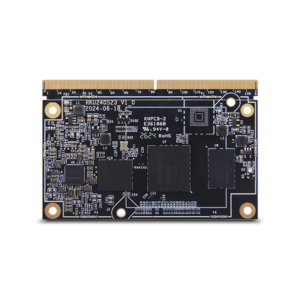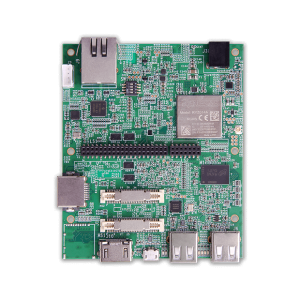Maximizing Efficiency in Embedded Systems with Computer-on-Modules
Maximizing Efficiency in Embedded Systems with Computer-on-Modules
Blog Article
Maximizing Efficiency in Embedded Systems with Computer-on-Modules
In today's fast-paced scientific landscape, businesses and developers are significantly embracing modular options to generally meet the ever-growing needs of high-performance applications. One particular option gaining traction is the utilization of embedded computer module. These small, self-contained programs are packed with all the current crucial components of a computer, like the model, storage, storage, and connectivity interfaces, all incorporated into a single unit. In this information, we examine why Computer-on-Modules are being a go-to selection for scalable, high-performance programs across different industries.

1. Compact Style and Integration
Among the main benefits of COMs is their compact kind factor. These segments are designed to incorporate all important the different parts of a computer, lowering the need for numerous discrete components and making it easier to generate lightweight, space-efficient systems. That integration enables designers to construct strong answers without sacrificing the overall measurement of the finish product, which is particularly helpful in industries such as embedded techniques, IoT products, and industrial automation.
2. Scalability for Diverse Programs
Scalability is an essential factor for contemporary programs, specially in groups like telecommunications, automotive, and edge computing. With Computer-on-Modules, companies can quickly range up or down depending on the certain performance and source requirements of their projects. Like, a business creating a benefit processing option may start with an element that meets fundamental wants and then upgrade to stronger segments as the workload or processing requirements grow. That adaptability enables corporations to future-proof their opportunities and align equipment with evolving performance demands.
3. High-Performance Computing
Many high-performance programs need an effective computational backbone to handle demanding responsibilities such as real-time knowledge control, video analytics, or unit learning. COMs are usually developed with powerful processors, high-speed interfaces, and ample storage, making them effective at delivering the high throughput and low-latency efficiency necessary for these applications. Furthermore, their capacity to aid the most recent model architectures assures that techniques can stay at the front of performance benchmarks.
4. Price Efficiency and Time Savings
Still another substantial advantageous asset of applying Computer-on-Modules is cost efficiency. Considering that the modules come pre-integrated with important components, designers save equally time and sources that would usually be spent on planning, screening, and assembling personal components. This can cause decreased growth cycles and a faster time-to-market for products, that will be important in competitive industries. Moreover, because the equipment parts are standardized, the danger of incompatibility is minimized, ultimately causing easier growth techniques and decrease engineering costs.
5. Variable Modification
While COMs provide a high degree of integration, they're also designed for flexibility. Many COMs come with numerous options for I/O interfaces, storage designs, and energy management options, letting designers to target the module to the particular needs of the application. This usefulness is very important in industries where modification is crucial, such as for instance medical products, robotics, and automotive applications.

Conclusion
To sum up, Computer-on-Modules offer numerous advantages for businesses and developers seeking to generate scalable, high-performance solutions. Their compact style, scalability, powerful processing capabilities, cost-efficiency, and modification possibilities cause them to become a perfect selection for a wide variety of applications. As industries continue to evolve and demand more powerful, flexible alternatives, COMs may undoubtedly play a essential position in shaping the continuing future of technology. Report this page